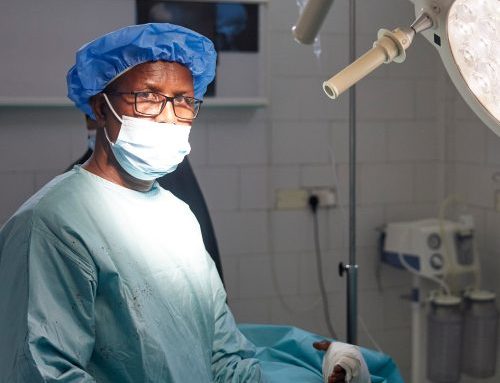Protecting Health Services During Conflicts and Emergencies
ICRC’s Health Care in Danger initiative focuses on how Health-care providers can be better prepared to prevent violence and/or mitigate and cope with its impact.

Building Resilience for the Future
In a world where attacks on healthcare facilities and personnel seem likely to persist into the foreseeable future, it becomes imperative to bolster the resilience of health systems. Resilience is the cornerstone upon which healthcare services can navigate the turbulent waters of violence and minimize its devastating impact.
The ICRC’s commitment extends to working hand in hand with national authorities, particularly ministries of health, to strengthen vulnerable health systems. This collaborative endeavor involves the incorporation of critical measures such as staff training, the securement of facilities, and the development of relevant standard operating procedures. These measures are designed to equip healthcare providers with the skills and tools needed to navigate the challenging landscape of healthcare in conflict zones.
Targeting Change:
-
Collaborative Resilience: Joining forces with national authorities to bolster fragile healthcare systems in conflict zones.
-
Training for Preparedness: Equipping healthcare providers with vital skills through staff training.
-
Guarding Facilities: Ensuring the security of healthcare facilities, a cornerstone of safety.
-
Standard Operating Excellence: Developing and implementing standard operating procedures for efficiency.
-
Future-Forward Vision: Aiming to expand resilience initiatives across constituencies.
-
Commitment to Impact: Demonstrating unwavering commitment to making a real difference in complex environments.
DISCOVER OUR PUBLICATIONS and TOOL on this topic:

Prevention of entry of weapons into health facilities: A Toolkit
This toolkit’s aim is to reduce the presence of weapons in healthcare facilities. It does this by exploring some of the reasons people bring in weapons and then provides them with alternatives that keep weapons outside the facility.
The toolkit uses messaging, re-design of the environment and training to change people’s behaviour over the long term.

Security Survey for Health Facilities
This manual explains how to use the Security Survey for Health Facilities, a tool designed by the ICRC Water and Habitat Unit to assess the risk exposure, security and preparedness level of any health facility operating in the context of an armed conflict. The tool includes a dashboard, which analyses the results of the survey, translates them into concrete measures and presents them in a clear format.

DEFUSING VIOLENT BEHAVIOUR IN HEALTH-CARE SETTINGS
LOOK OUT FOR WARNING SIGNS
Escalating interpersonal tension can lead to distress and changes in behaviour.
Quick visual guide
Every week, around the world, hospitals, medical personnel and aid workers come under attack. They are not a target. Health Care in Danger is an initiative of the International Red Cross and Red Crescent Movement aimed at addressing the issue of violence against patients, health workers, facilities and vehicles, and ensuring safe access to and delivery of health care in armed conflict and other emergencies.